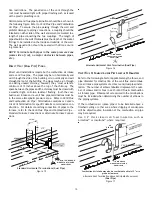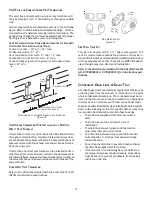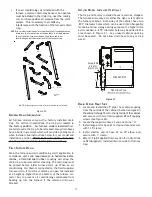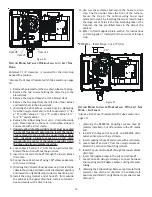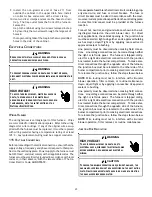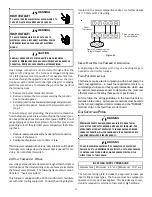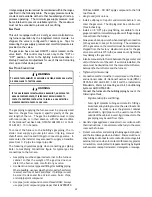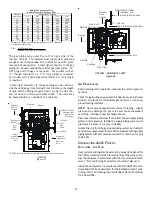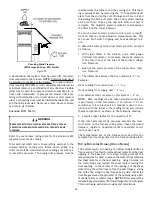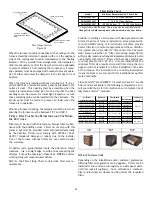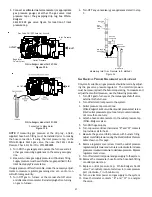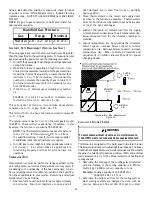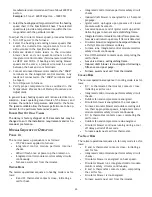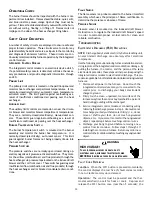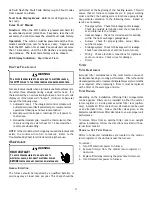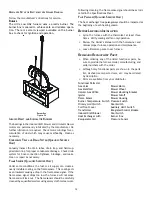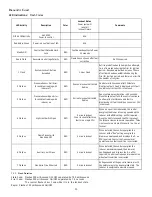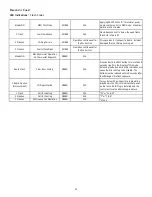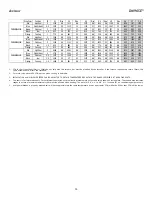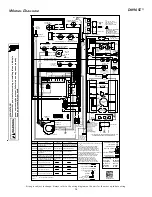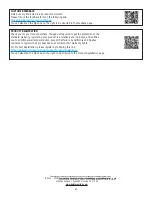
28
Using a leak detection solution or soap suds, check for leaks
at outlet or screw (White-Rodgers valve). Bubbles forming
indicate a leak. SHUT OFF GAS AND REPAIR ALL LEAKS IMME-
DIATELY!
NOTE:
For gas to gas conversion, consult your dealer for
appropriate conversion.
Gas
Range
Nominal
Natural 2.8 - 3.2" w.c. 3.0" w.c.
Manifold Gas Pressure
G
AS
I
NPUT
R
ATE
M
EASUREMENT
(N
ATURAL
G
AS
O
NLY
)
The actual gas input rate to the furnace must never be greater
than that specified on the unit rating plate. To measure natural
gas input using the gas meter, use the following procedure.
1. Turn OFF the gas supply to all other gas-burning appliances
except the furnace.
2. While the furnace is operating at high fire rate, time
and record one complete revolution of the gas meter dial,
measuring the smallest quantity, usually the dial that
indicates 1/2 cu. ft. per revolution. You will use this
number to calculate the quantity of gas in cubic ft. if
the furnace would consume if it ran steadily for one
hour (3600 seconds).
3. If the 1/2 cu. ft. dial was used, multiply your number
x 2.
EXAMPLE: If it took 23 seconds to complete one
revolution of the 1/2 ft. dial (23 x 2 = 46).
This tells us that at this rate, it would take 46 seconds to
consume one cu. ft. of gas. 3600 / 46 = 78.
This tells us that in one hour, the furnace would consume 78
cu. ft. of gas.
The typical value range for 1 cu. ft. of natural gas is around
1000 BTU. Check with your gas utility, if possible. In this
example, the furnace is consuming 78,000 BTUH.
NOTE:
The final manifold pressure cannot vary by more
than ± 0.3” w.c. for Natural and + 0.5” for LP from
the specified setting. Consult your local gas supplier
if additional input rate adjustment is required.
4. Turn ON gas to and relight all other appliances turned
off in step 1. Be certain that all appliances are
functioning properly and that all pilot burners are
operating.
T
EMPERATURE
R
ISE
Temperature rise must be within the range specified on the
unit rating plate. An incorrect temperature rise may result in
condensing in or overheating of the heat exchanger. An air-
flow and temperature rise table is provided in the Specifica-
tion Sheet applicable to your model. Determine and adjust
temperature rise as follows:
1. Operate furnace with burners firing for approximately
ten minutes. Ensure all registers are open and all
duct dampers are in their final (fully or partially
open) position.
2. Place thermometers in the return and supply ducts
as close to the furnace as possible. Thermometers
must not be influenced by radiant heat by being able
to “see” the heat exchanger.
3. Subtract the return air temperature from the supply
air temperature to determine the air temperature rise.
Allow adequate time for thermometer readings to
stabilize.
4. Adjust temperature rise by adjusting the circulator
blower speed. Increase blower speed to reduce
temperature rise. Decrease blower speed to increase
temperature rise. Refer to
Startup Procedure and
Adjustment -Circulator Blower Speeds
for speed
changing details.
SUPPLY
AIR
RETURN
AIR
Temperature Rise Measurement
Figure 35
C
IRCULATOR
B
LOWER
S
PEEDS
T
O
AVOID
PERSONAL
INJURY
OR
DEATH
DUE
TO
ELECTRICAL
SHOCK
,
TURN
OFF
POWER
TO
THE
FURNACE
BEFORE
CHANGING
SPEED
TAPS
.
WARNING
This furnace is equipped with a multi-speed circulator blower.
This blower provides ease in adjusting blower speeds. The Speci-
fication Sheet applicable to your model provides an airflow table,
showing the relationship between airflow (CFM) and external
static pressure (E.S.P.), for the proper selection of heating and
cooling speeds.
1. Determine the tonnage of the cooling system installed
with the furnace. If the cooling capacity is in BTU/hr
divide it by 12,000 to convert capacity to tons.
Example:
Cooling Capacity of 30,000 BTU/hr.
30,000/12,000 = 2.5 Tons
2. Determine the proper air flow for the cooling system.
Most cooling systems are designed to work with air
volume between 350 and 450 CFM per ton. Most
Содержание DM96SE
Страница 37: ...37 THIS PAGE LEFT INTENTIONALLY BLANK ...
Страница 38: ...38 THIS PAGE LEFT INTENTIONALLY BLANK ...
Страница 39: ...39 THIS PAGE LEFT INTENTIONALLY BLANK ...


